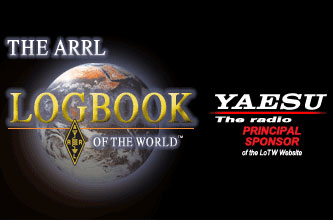
PMR446 frequencies
There is a total of eight PMR466 channels or PMR466 frequencies that can be used. These are spaced 12.5kHz apart from each other. As the name of the system suggests, the PMR446 frequencies are in the UHF portion of the radio spectrum and located around 446 MHz. The PMR446 frequencies have been harmonised (but not necessarily authorised) for use across Europe. The channel centre frequencies are as follows:
| PMR466 Channel | Frequency (MHz) |
| 1 | 446.00625 |
| 2 | 446.01875 |
| 3 | 446.03125 |
| 4 | 446.04375 |
| 5 | 446.05625 |
| 6 | 446.06875 |
| 7 | 446.08125 |
| 8 | 446.09375 |
LPD433 frequencies
LPD433 (low power device 433 MHz) is a UHF band in which licence free communication devices are allowed to operate. The frequencies correspond with the ITU region 1 ISM band of 433.050 MHz to 434.790 MHz, and operation is mainly limited to CEPT countries. The frequencies used are within the 70-centimeter band, which is traditionally reserved for higher power amateur radio operations in most nations worldwide.
LPD hand-held radios are authorized for license-free voice communications use in most of Europe using analog frequency modulation (FM) as part of short range device regulations,[1] with 25 kHz channel spacing, for a total of 69 channels. In some countries, LPD devices may only be used with the integral and non-removable antenna with a maximum legal power output of 10 mW.
| Channel | Frequency (MHz) | Channel | Frequency (MHz) | Channel | Frequency (MHz) |
| 1 | 433.075 | 24 | 433.650 | 47 | 434.225 |
| 2 | 433.100 | 25 | 433.675 | 48 | 434.250 |
| 3 | 433.125 | 26 | 433.700 | 49 | 434.275 |
| 4 | 433.150 | 27 | 433.725 | 50 | 434.300 |
| 5 | 433.175 | 28 | 433.750 | 51 | 434.325 |
| 6 | 433.200 | 29 | 433.775 | 52 | 434.350 |
| 7 | 433.225 | 30 | 433.800 | 53 | 434.375 |
| 8 | 433.250 | 31 | 433.825 | 54 | 434.400 |
| 9 | 433.275 | 32 | 433.850 | 55 | 434.425 |
| 10 | 433.300 | 33 | 433.875 | 56 | 434.450 |
| 11 | 433.325 | 34 | 433.900 | 57 | 434.475 |
| 12 | 433.350 | 35 | 433.925 | 58 | 434.500 |
| 13 | 433.375 | 36 | 433.950 | 59 | 434.525 |
| 14 | 433.400 | 37 | 433.975 | 60 | 434.550 |
| 15 | 433.425 | 38 | 434.000 | 61 | 434.575 |
| 16 | 433.450 | 39 | 434.025 | 62 | 434.600 |
| 17 | 433.475 | 40 | 434.050 | 63 | 434.625 |
| 18 | 433.500 | 41 | 434.075 | 64 | 434.650 |
| 19 | 433.525 | 42 | 434.100 | 65 | 434.675 |
| 20 | 433.550 | 43 | 434.125 | 66 | 434.700 |
| 21 | 433.575 | 44 | 434.150 | 67 | 434.725 |
| 22 | 433.600 | 45 | 434.175 | 68 | 434.750 |
| 23 | 433.625 | 46 | 434.200 | 69 | 434.775 |
CB frequencies
Citizens Band radio (also known as CB radio) is, in many countries, a system of short-distance radio communications between individuals on a selection of 40 channels within the 27 MHz (11 m) band. Citizens band is distinct from the FRS, GMRS, MURS, and Amateur Radio Service ("ham" radio) systems. In many countries, CB operation does not require a license, and (unlike amateur radio) it may be used for business or personal communications.
|
Channel |
Frequency (MHz) |
Channel |
Frequency (MHz) |
|
1 |
26.965 |
21 |
27.215 |
|
2 |
26.975 |
22 |
27.225 |
|
3 |
26.985 |
23 |
27.255 |
|
4 |
27.005 |
24 |
27.235 |
|
5 |
27.015 |
25 |
27.245 |
|
6 |
27.025 |
26 |
27.265 |
|
7 |
27.035 |
27 |
27.275 |
|
8 |
27.055 |
28 |
27.285 |
|
9 |
27.065 |
29 |
27.295 |
|
10 |
27.075 |
30 |
27.305 |
|
11 |
27.085 |
31 |
27.315 |
|
12 |
27.105 |
32 |
27.325 |
|
13 |
27.115 |
33 |
27.335 |
|
14 |
27.125 |
34 |
27.345 |
|
15 |
27.135 |
35 |
27.355 |
|
16 |
27.155 |
36 |
27.365 |
|
17 |
27.165 |
37 |
27.375 |
|
18 |
27.175 |
38 |
27.385 |
|
19 |
27.185 |
39 |
27.395 |
|
20 |
27.205 |
40 |
27.405 |









